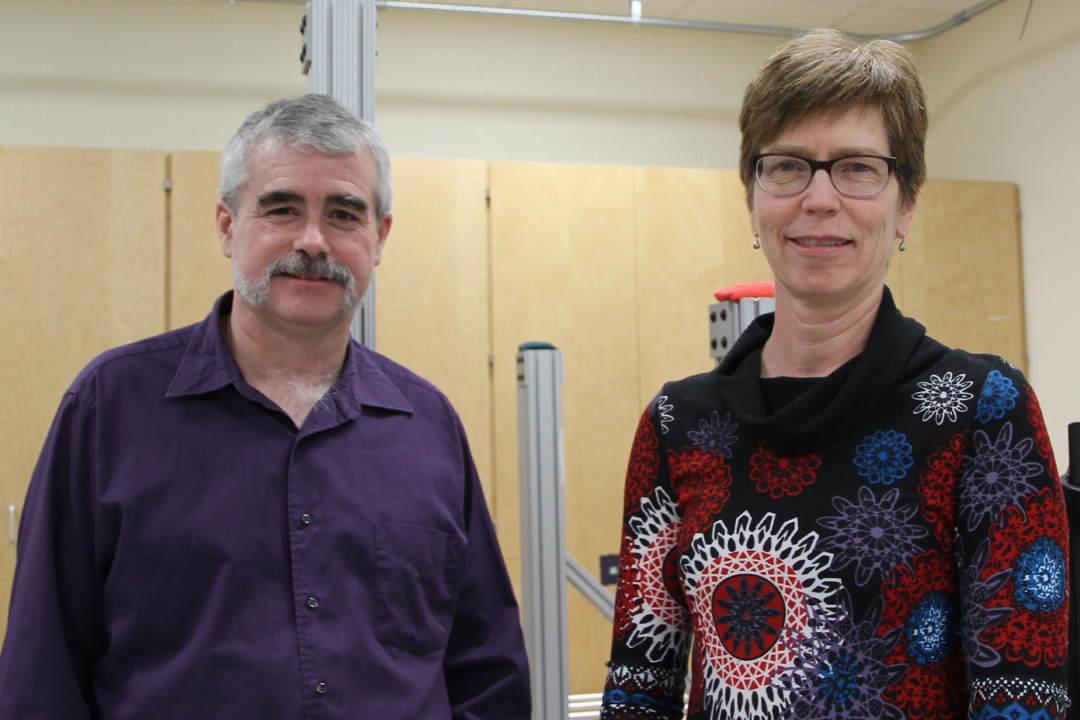
Researchers focus on falling and frailty
Fall-related injuries continue to be the leading cause of emergency room visits and hospitalization for Canadian seniors, one of the fastest-growing demographics in the country.
By Lesley PorterThrough interdisciplinary research, computer simulation, patient-oriented research and community partnerships, U of S researchers are looking to reduce falls and injury risks by educating and empowering older adults.
“Our research is focused on falls and injury prevention with falls,” said Joel Lanovaz, an associate professor in the College of Kinesiology.
This includes working with frail adults—those more vulnerable to catastrophic physical or mental impairments associated with aging—as well as the pre-frailolder adults who are susceptible to falls but may not be classified as frail, explained Lanovaz.
“The question is, how do you stop them from going down that spiral to become a frail adult that has to be taken care of with the next step in the health-care system?”
The area of falling and frailty research is growing as fast as the demographic of people experiencing it, explained Cathy Arnold, a faculty member in the School of Physical Therapy.
“By 2036, 25 per cent of our population will be over the age of 65, and the health-care costs associated with that are just escalating dramatically,” said Arnold, a former clinician who has also seen her fair share of injuries and has treated many older adults. “All health-care systems are really struggling with how to cope with that. It has a huge impact on long-term care and acute care and community care across the spectrum.”
Aside from the physical and economic effects, the senior’s social life may be impacted by the subsequent fear of future falls.
“They decrease their activity levels and social levels and interaction with others—it becomes a real spiral of frailty,” said Arnold, adding that simple tasks like grocery shopping get put on the back burner or delegated to caregivers.
To change attitudes about falling and to empower seniors, Arnold and Lanovaz and their co-investigators created FAST (Fall Arrest Strategy Training), a program aimed at decreasing injury risk when a fall is unavoidable. Aside from increasing arm strength, reaction time and trunk control, FAST teaches better landing techniques in the event of a fall. These techniques were integrated into another fall prevention program co-ordinated by the Saskatoon Health Region and subsequently taught at senior residences in the city.
By supplementing that program with their research, “it’s turned out to be a real excellent collaborative opportunity for both of us,” said Arnold. “They get some outcome measures for their program, and we utilize the sites and participants to recruit.”
Their research laboratory in the Kinesiology Building has a FOOSH (Fall On OutStretched Hands) apparatus, a diagonal structure made to simulate a fall. The participant is fitted with cables and falls forward, where their landing and post-impact reaction can be measured. Data from FOOSH led to the development of the FAST program, and further application of this research includes a computer simulation model, which can help understand differences in injury risk and the role of modifiable factors such as strength, said Lanovaz. “Our plan is to eventually map those models to match our participants and then we simulate them actually falling, which we can’t really do in real life,” he said. “We can ask those what-if questions with the computer simulations.”
Arnold and Lanovaz also plan to execute a patient-oriented study—encompassing patients, policy-makers, community groups, clinicians and researchers—looking at the determining factors of participating in a program such as FAST. According to Lanovaz, gender may be one of those factors.
“One of the questions the focus group is looking at pertains to the barriers to getting involved,” he explained. “Most of these programs, at the sites, the women are going to them and not the men, despite stats showing that the men fall as much as women do.”
Arnold and Lanovaz also recently presented their research to MPs in Ottawa as part of a health research symposium, focusing on the biology of frailty as well as its role in patients within a crowded health-care system.
“When these kinds of things come up, they’re very eager to learn,” Lanovaz said of the event, adding that many of the MPs had personal anecdotes or experiences with frailty, typically with parents or grandparents.
Similarly, Arnold believes in the importance of taking an interdisciplinary look at a growing issue impacting the physical, social and mental well-being of Canadians.
“It’s a huge health-care issue across the country and provincially,” she said. “Anything that would help to keep older adults at home and free of injury is important.”

